Product Classification Solution
Inaccurately classifying products according to regulatory requirements can lead to significant business challenges and risks such as cross-border delays, fines and penalties. The VMware product classification system enables Product Release Managers to easily submit their product releases for global trade classification.
Organization:
VMware
Industry:
Information Technology
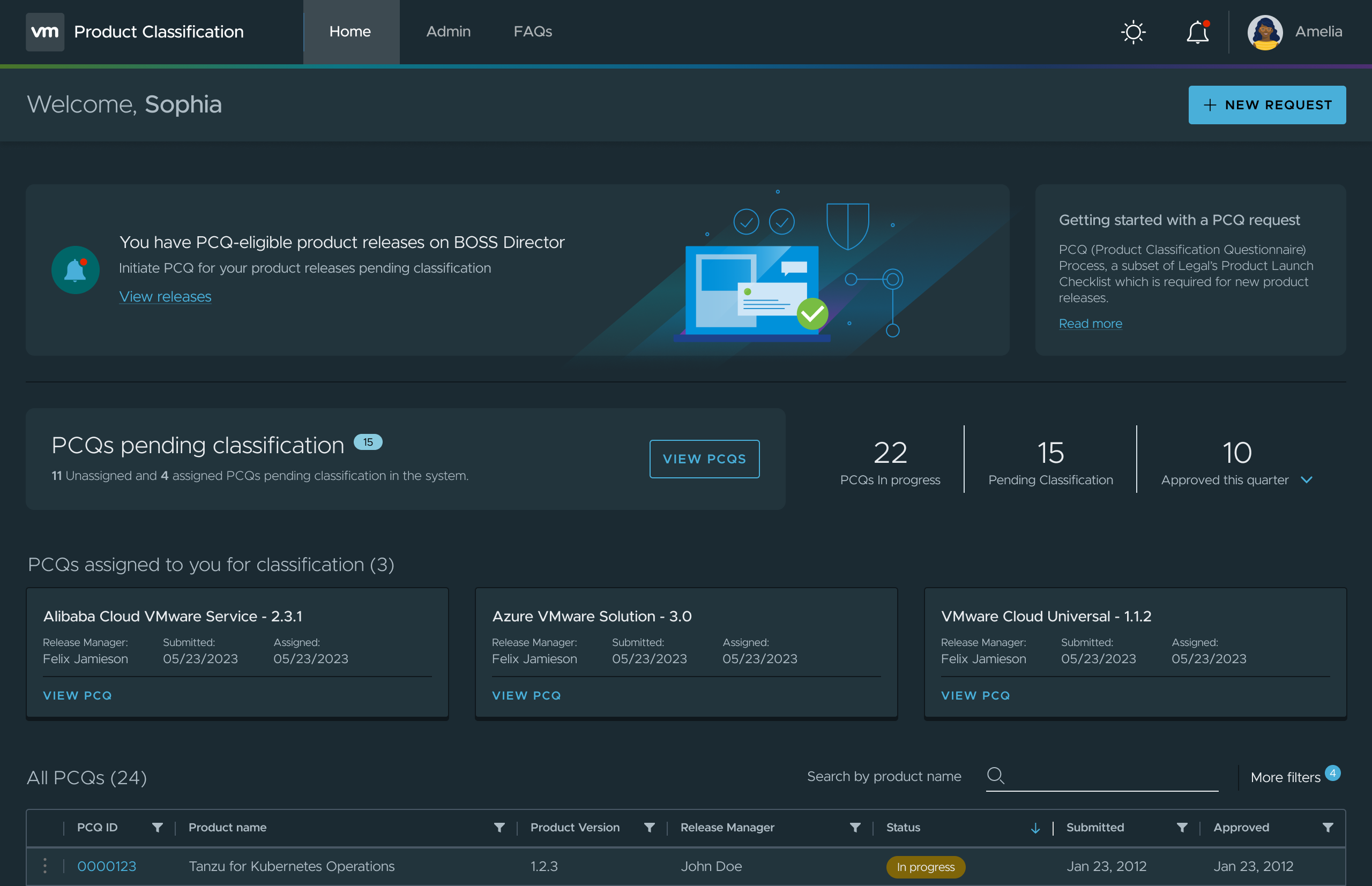
Status Quo
In VMware’s quest for an efficient PCQ process, they turned to a third-party SaaS application. Yet, as the story unfolded, challenges emerged like shadows in the night: soaring costs from regulatory changes, frustrating user interactions, slow performance, lack of collaboration capabilities, and poor integration with existing product release-related tools. These pain points were uncovered using a mix of discovery research methodologies.
Mapping out new flows
Based on a thorough deep dive into understanding the problem and engaging in collaborative activities with the legal and trade compliance teams, new user flows were mapped out to ensure that every step in the user journey is well thought out, optimized and documented for the new design.
Designing for Scalability
A crucial part of this project involved integrating the new platform with existing systems at VMware, such as the product catalog. This integration aimed to streamline the process by reducing manual entry of release information and minimizing potential human errors.
Our overarching goal was to ensure that all product types, including SaaS and On-Prem products, could be properly classified within the tool. This became even more vital during VMware's acquisition by Broadcom, as it was necessary to incorporate Broadcom’s products into the classification system.
The layout and structure of the pages were mocked up, allowing us to share various options under consideration, exchange ideas early, and iterate efficiently with low-fidelity prototypes.
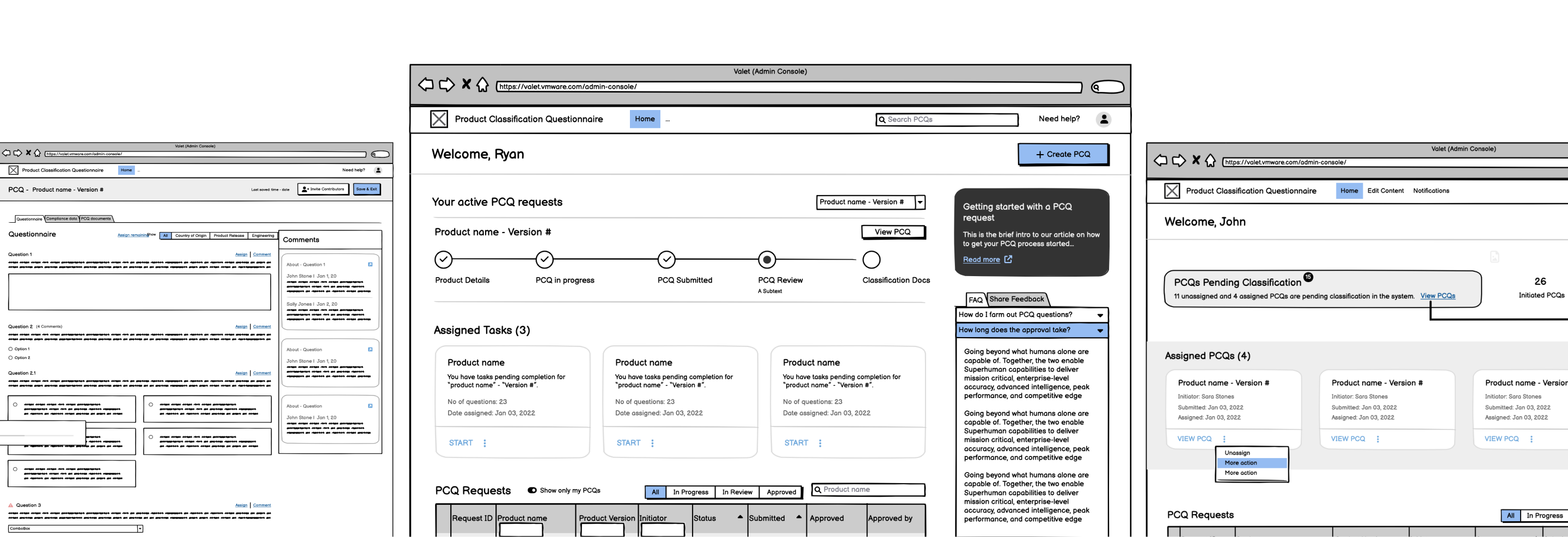
Designing the details
High-fidelity prototypes were created and tailored to each identified user role and the admin console was also designed. These new designs leverage established terminologies across the user groups. They also played a dual role, informing both the planning and execution of usability testing and the design-to-development workflow using VMware’s Clarity Design System.
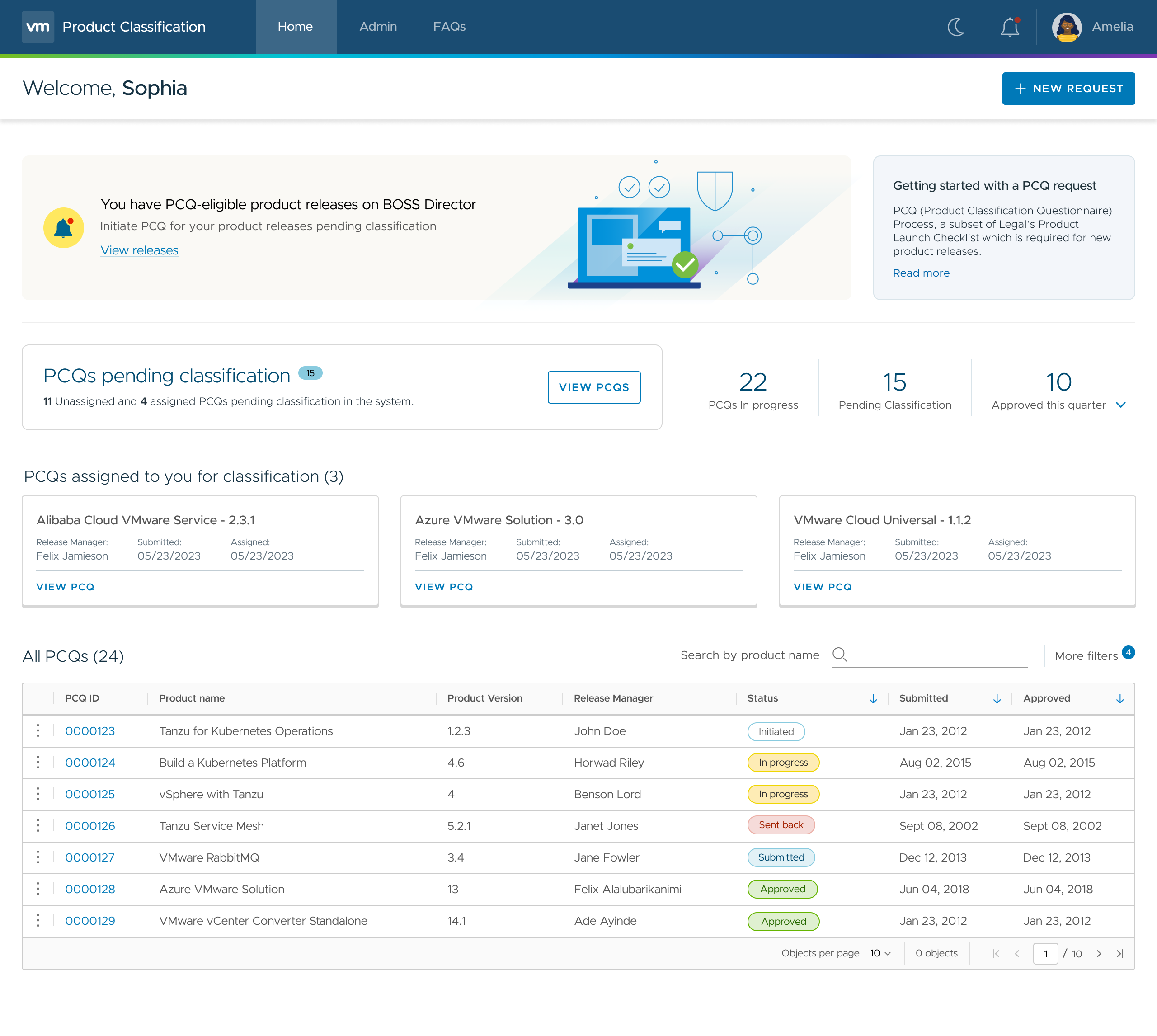
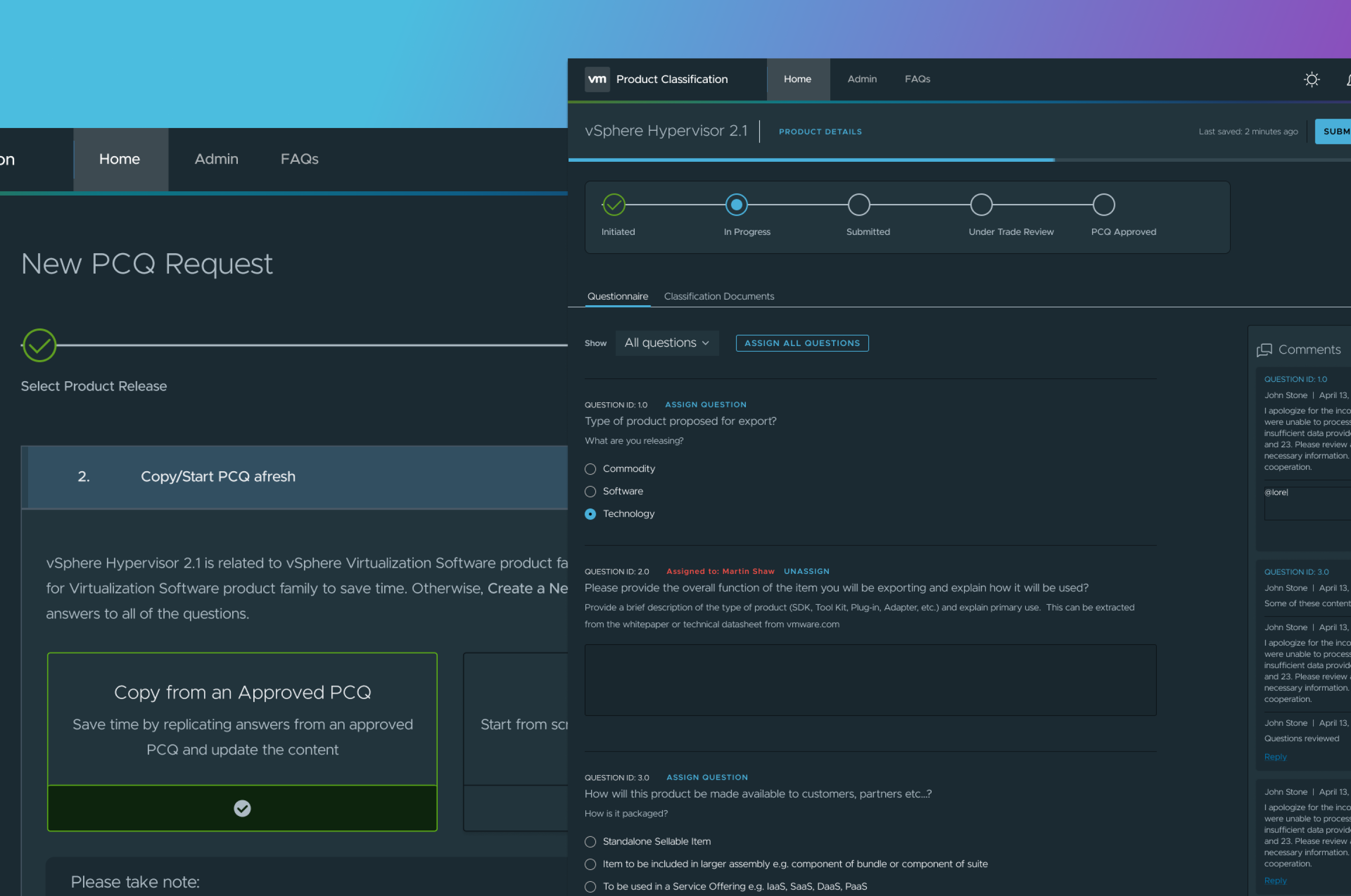
Status Management
Develop a comprehensive status management system featuring clear visual cues displayed on the homepage and questionnaire pages. These intuitive indicators eliminated the need for external assistance for progress report.


Historical view
I maximized the real estate on the homepage to offer users a comprehensive view of all submitted requests across various statuses, enabling access to historical data.
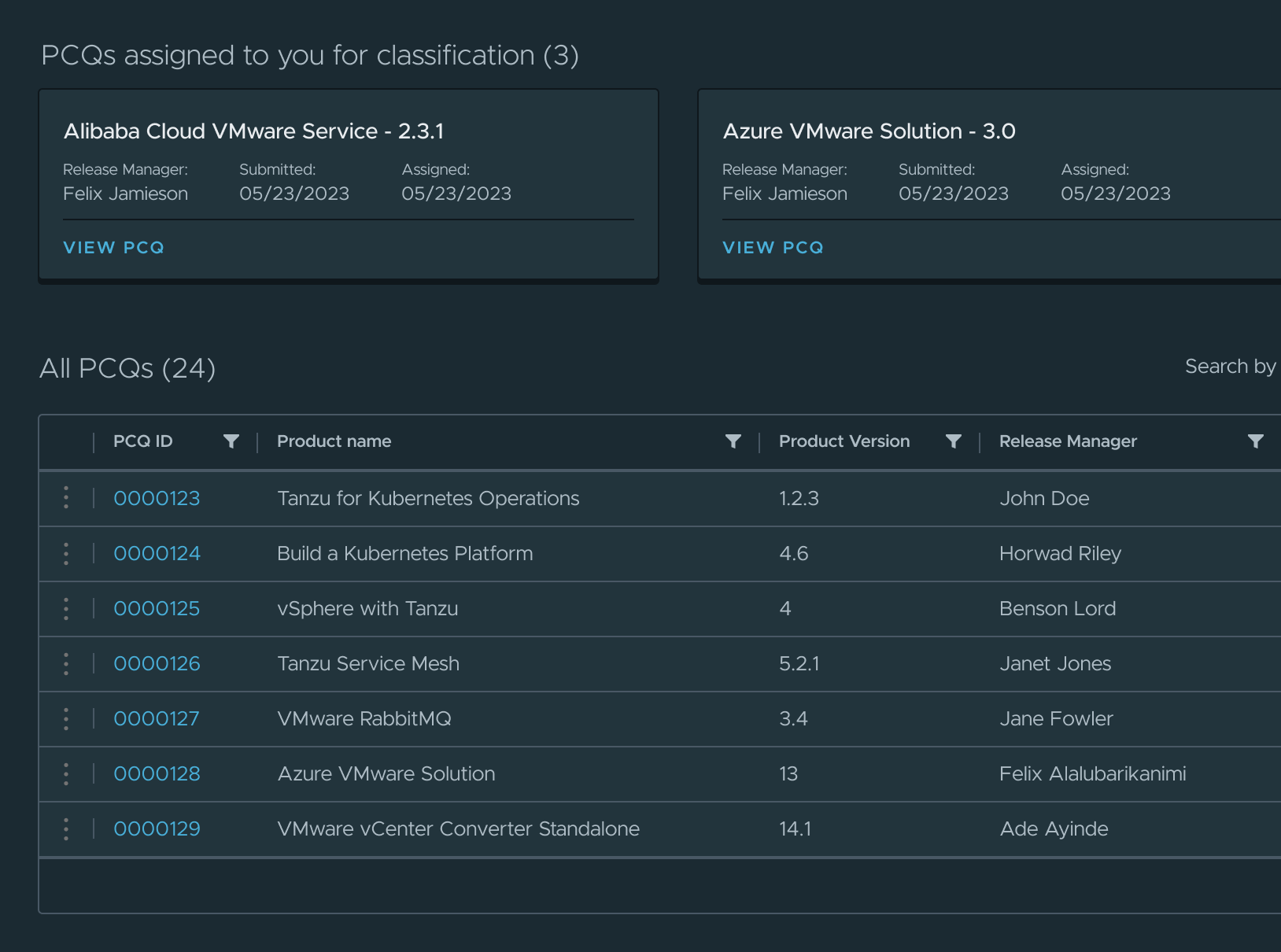
Easy request submission
I designed a simplified PCQ request process, leveraging integration with existing product release tools, thereby eliminating manual entry of product-related information.
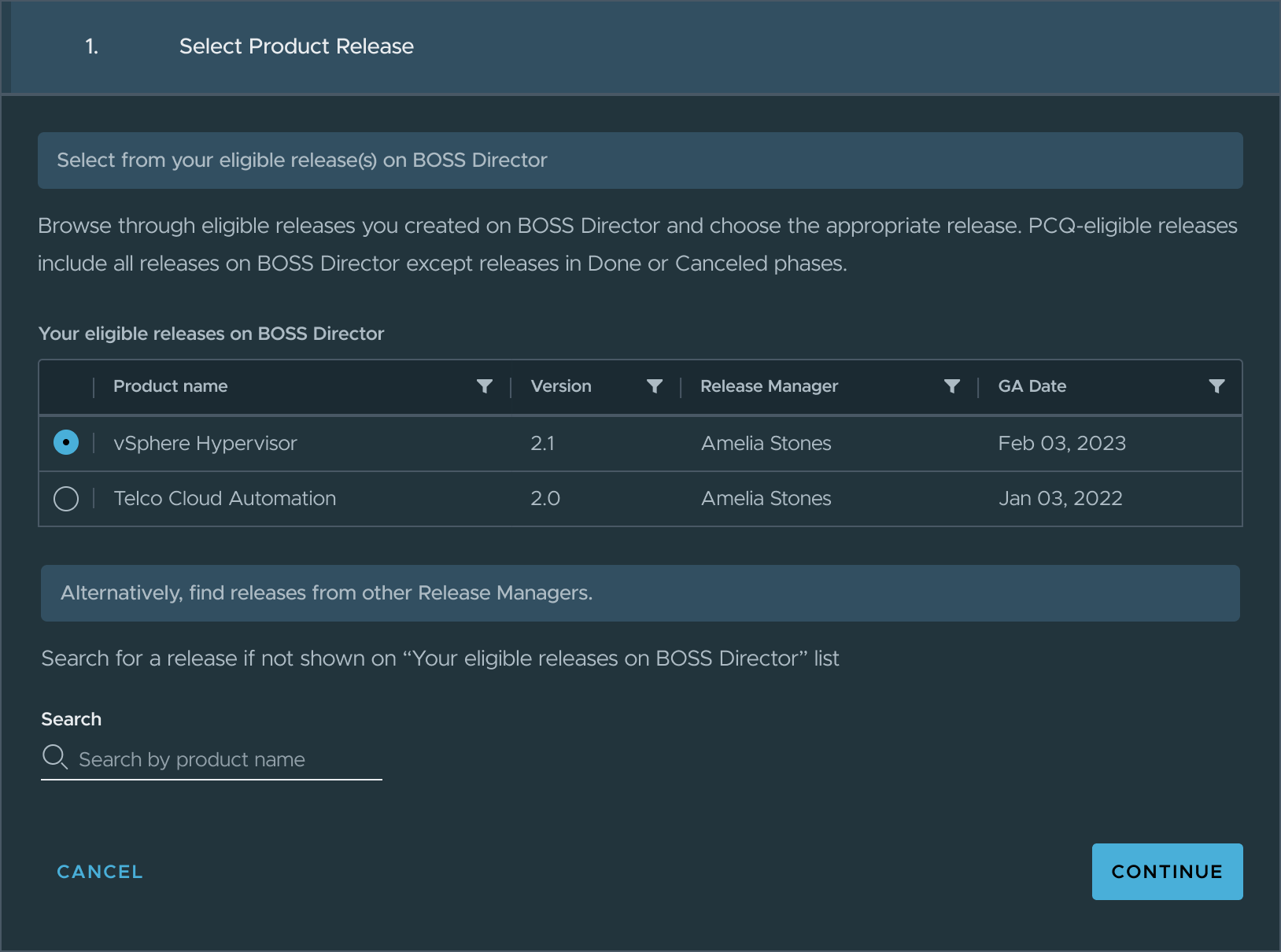
Business Impact
Reduced Cost: More than $400,000 saved annually in license and enhancement costs.
Strategic Capabilities: Scalability, smooth communication and end-to-end integration with other systems are strategic advantages that were a result of the new PCQ platform
Data Privacy: With PCQ becoming an internal application, VMware got control over all PCQ-related data creation, access, modification and deletion.

